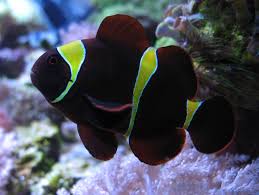1. The Significance of Tea Brewing in Chinese Culture

Tea brewing is more than just a daily practice in China—it is an art form, a ritual, and a reflection of philosophy. Rooted in thousands of years of history, the Chinese tea ceremony embodies principles of harmony, balance, and respect for nature. Unlike standard tea preparation methods, brewing fresh Chinese tea requires precision, skill, and deep knowledge of tea leaves, water temperature, steeping time, and the right utensils.
From the famous Gongfu Cha (工夫茶) technique to the delicate infusion methods used in green and white teas, mastering these techniques can elevate the flavors, aroma, and health benefits of fresh tea. This article explores the special brewing techniques used in China and how they bring out the best in different types of tea.
2. Essential Elements in Fresh Tea Brewing
Brewing fresh tea requires an understanding of several key factors:
2.1. Selecting High-Quality Fresh Tea Leaves
- The origin and season of the tea leaves influence their taste.
- Fresh tea should have vibrant color, a strong aroma, and delicate leaf structure.
- Hand-picked teas, such as Longjing (龙井) and Tieguanyin (铁观音), require careful handling to preserve their natural flavors.
2.2. Water Quality and Temperature
- The best tea is brewed using spring water or purified soft water, which enhances the tea’s natural sweetness.
- Different teas require different temperatures:
- Green tea: 70–85°C (158–185°F)
- White tea: 75–85°C (167–185°F)
- Oolong tea: 85–95°C (185–203°F)
- Black tea: 90–100°C (194–212°F)
- Pu-erh tea: 95–100°C (203–212°F)
2.3. Choosing the Right Brewing Vessel
- Gaiwan (盖碗): A lidded porcelain cup used for delicate teas like green and white tea.
- Yixing Clay Teapot (宜兴紫砂壶): Porous clay teapots that enhance the flavor of oolong and aged teas.
- Glass Teapot: Ideal for observing the unfurling of delicate tea leaves, commonly used for floral teas.
2.4. Steeping Time
- The first steep is short, usually between 10–30 seconds.
- Multiple infusions allow the tea to gradually release its complex flavors.
- Over-steeping can lead to excessive bitterness, especially in fresh green tea.
3. Gongfu Cha – The Art of Precision Brewing
The Gongfu Cha (工夫茶) technique, originating from Fujian and Guangdong, is one of the most sophisticated tea brewing methods in China. It focuses on maximizing the aroma, flavor, and aftertaste of the tea through multiple short infusions.
3.1. Key Steps in Gongfu Cha
- Warming the teapot and cups – Hot water is poured over the teapot and cups to ensure even heat distribution.
- Rinsing the tea leaves – The first infusion (sometimes called the “awakening brew”) is discarded to remove impurities and open up the leaves.
- Short, repeated infusions – Each infusion lasts 5–30 seconds, increasing slightly with each round.
- Pouring technique – The brewed tea is evenly distributed among small cups to ensure flavor consistency.
3.2. Best Teas for Gongfu Cha
- Oolong teas (Tieguanyin, Da Hong Pao)
- Pu-erh tea (Sheng Pu-erh, Shou Pu-erh)
- Some black teas (Lapsang Souchong, Dianhong)
Gongfu Cha is best appreciated in a tranquil setting, allowing tea drinkers to savor the evolving flavors with each infusion.
4. Brewing Fresh Green Tea – The Floating Leaf Method
Green tea, known for its delicate sweetness and fresh aroma, requires a gentle and precise brewing approach.
4.1. The Floating Leaf Technique
This technique is commonly used for high-quality green teas such as Longjing (龙井) and Biluochun (碧螺春).
Steps:
- Use a glass teapot or cup to appreciate the leaf movements.
- Pour hot water at 75–85°C (167–185°F) into the vessel.
- Drop the tea leaves gently on the water’s surface and watch them sink gradually.
- Avoid stirring – let the leaves unfurl naturally for an even infusion.
- Steep for 1–2 minutes, adjusting to taste.
This method highlights the grassy, floral, and nutty flavors of fresh green tea, preventing bitterness.
5. White Tea Brewing – Slow and Gentle Infusion
White tea, such as Bai Mudan (白牡丹) and Silver Needle (白毫银针), is best brewed with low-temperature water and longer steeping times.
5.1. The Bowl Method (Glass Infusion)
- Instead of a teapot, white tea is brewed in a bowl with hot water.
- The leaves float freely, releasing their delicate flavors gradually.
- Steeping time: 3–5 minutes, but can be extended for multiple infusions.
This technique allows the natural sweetness and floral aroma of white tea to fully develop.
6. Oolong Tea – The Phoenix Pouring Method
Oolong teas, known for their rich, complex flavors, require a precise pouring technique to extract the best taste.
6.1. Phoenix Pouring Technique
- The hot water is poured in a circular motion, ensuring even extraction.
- Steeping times vary from 30 seconds to 2 minutes, depending on the infusion.
- This method is highly effective for twisted oolong leaves, like Da Hong Pao (大红袍).
Oolong teas can withstand multiple infusions, revealing new flavors with each steep.
7. Black Tea – The Rolling Pour Technique
Chinese black teas, such as Keemun (祁门红茶) and Lapsang Souchong (正山小种), require slightly longer steeping times and higher temperatures.
7.1. Rolling Pour Technique
- Water is poured slowly from a height, allowing it to mix with the leaves naturally.
- The gentle swirling motion enhances oxidation and deepens the tea’s flavor.
- Ideal steeping time: 2–4 minutes.
This method draws out the malty, floral, and smoky notes unique to Chinese black teas.
8. Conclusion
The art of brewing fresh Chinese tea is a skill that requires practice, patience, and attention to detail. Whether using the precision-based Gongfu Cha method, the delicate floating leaf technique, or the slow white tea infusion, each method unlocks different aspects of the tea’s character.
By understanding water temperature, steeping time, and pouring techniques, tea lovers can experience the depth, richness, and elegance of authentic Chinese fresh tea. Through these time-honored methods, the spirit of Chinese tea culture continues to flourish, connecting generations through the beauty of tea.
Leave a Reply